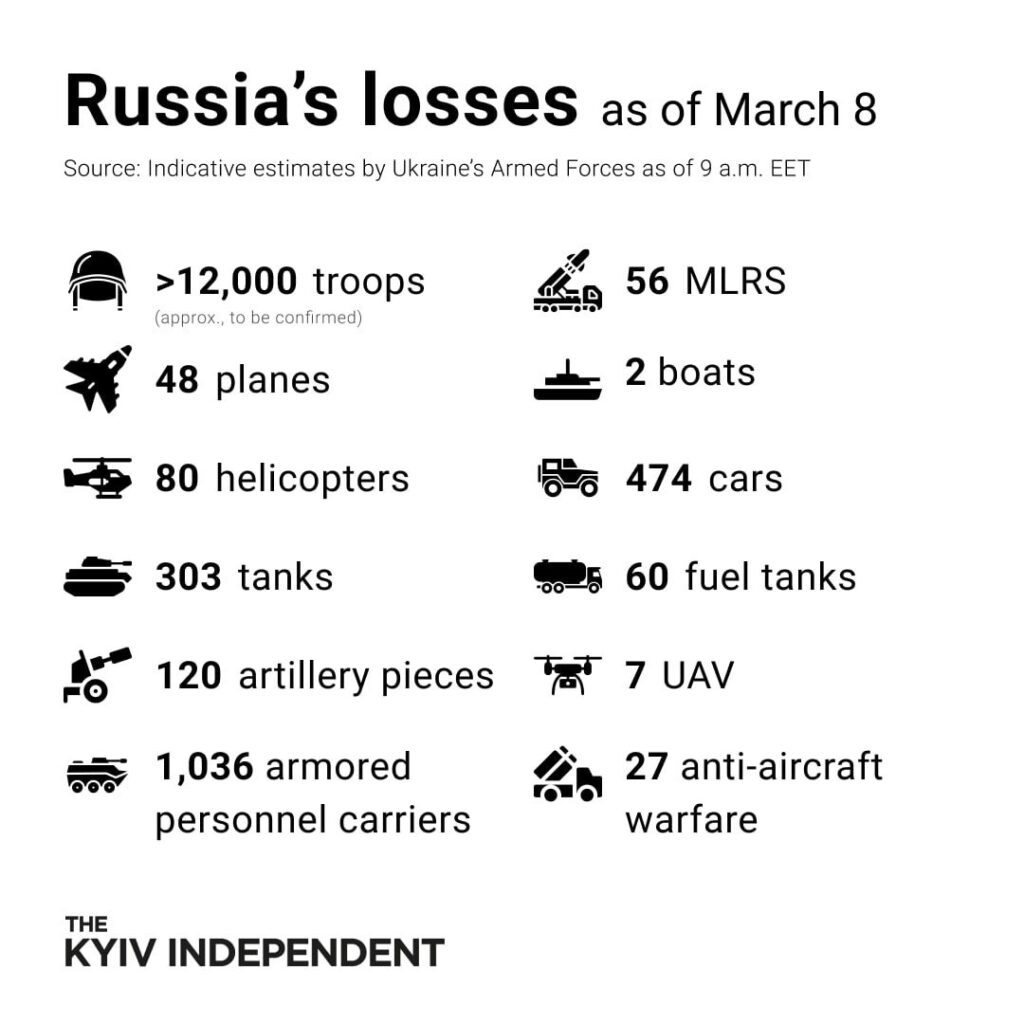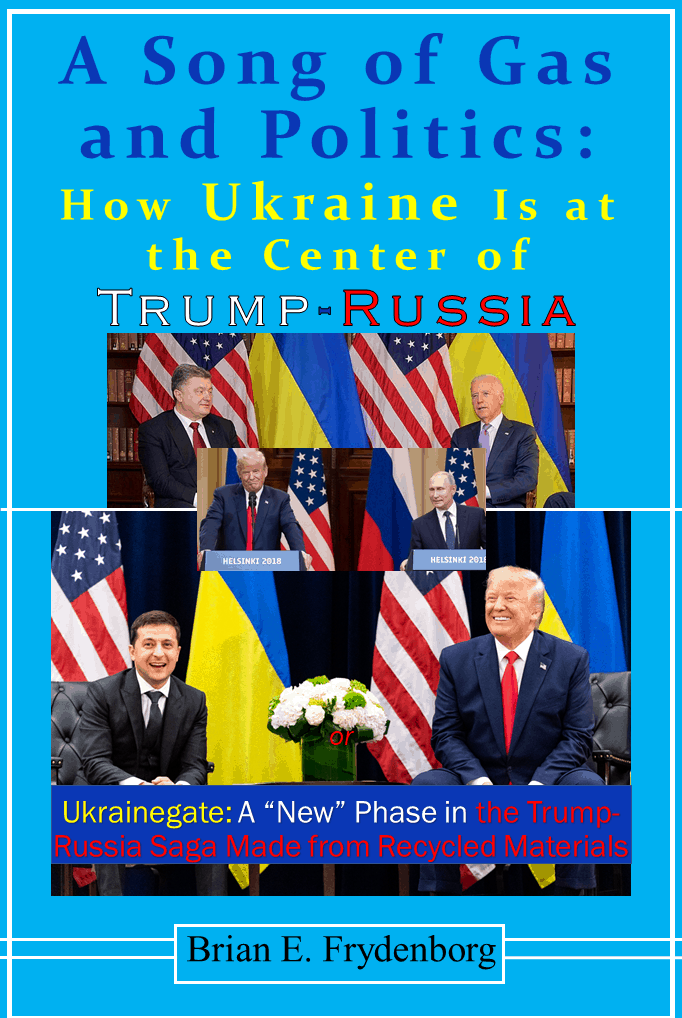Credibility and other factors lead to a far more honest accounting from Ukraine than Russia when it comes to Russians killed and Russian vehicles and aircraft destroyed
(Russian/Русский перевод) By Brian E. Frydenborg (LinkedIn, Facebook, Twitter @bfry1981) March 9, 2022; update July 1: updated casualty numbers at the end; update April 18: updated casualty numbers at the end; note/update March 20: casualties have obviously increased since March 9 but the point and validity of the analysis still stands; updated casualties given at the end, with a comparison to casualties from the Soviet-Afghan War); updated to add Tolkien content March 11; excerpted and slightly adapted from his article The Beginning of the End of Putin? Why the Russian Army May (and Should) Revolt published by Small Wars Journal March 8, which was featured on March 9 by Real Clear Defense, The National Endowment for Democracy’s (NED) Democracy Digest, and SOF News; see related RCN articles excerpted and slightly adapted from that piece:
- March 9: A Look at Putin’s Disgraceful, Heartless, Barbaric Treatment of Russian Soldiers and Their Families
- March 13: How Best to Penetrate Putin’s Media Iron Curtain in Russia? Dead Russian Troops
- March 19: Time for the Russian Army and Russian People to Revolt and Overthrow Putin
- September 16: I Saw This War Could Be Putin’s Undoing All the Way Back in Early March
Also see Brian’s preceding February 21 Small Wars Journal piece The Utter Banality of Putin’s Kabuki Campaign in Ukraine, featured by SOF News on February 26; see related RCN articles excerpted and slightly adapted from that piece:
- February 21: Why Is Putin Doing All This Now?
- February 25: How to Lose Nations and Alienate People, by Vladimir Putin
- March 1: Putin’s NATO Narrative Is Bullshit
- March 16: Putin’s Zombie Russian/Slavic Ethnonationalism Is Utterly Banal
WASHINGTON and SILVER SPRING—For those willing to search, there are also plenty of videos of Russian soldiers’ dead bodies, abandoned by their comrades and country.
In fact, casualties are clearly very high for the Russians, and by all major indicators, significantly higher than those of Ukraine’s armed forces. Though precise numbers are impossible to arrive at amidst the current fog of war, there are multiple reasons to believe the higher Russian casualties estimated by Ukraine’s government are far closer to the truth than Russia’s claims.
For one thing, we are talking about Russia, which has proven beyond any reasonable doubt that it has zero credibility on such matters, gaslighting as it has for years about all things Ukraine (as well as other theaters in which it operates militarily, especially in Syria). But led by President Volodymyr Zelensky, Ukraine’s democracy is trying to build up its credibility and earn spots in both the European Union and NATO, working hard to overcome the corruption that has long plagued the country (corruption boosted greatly by Putin et al., as I have discussed at length). Thus, maintaining the distinction in regards to truth-telling between itself and Russia is vital for Ukraine, which has a lot to lose by lying, especially at a time when it is in desperate, existential need of international support. Zelensky and his government have a far better record than Putin and his Kremlin, then, and should be extended the (slightly cautiously bestowed) benefit of the doubt. Ukraine also has a “robust,” “free” media landscape and open society relative to Russia where information travels far more freely than Russia, a further point in favor of the Ukrainians’ accounting.
And while, even taking into account the preceding, it is possible that there could be some deliberate exaggeration on Ukraine’s part for propaganda purposes, Ukraine has demonstrated during this conflict an ability to correct more self-serving narratives to more accurate ones when new information becomes available.
In this war, it was the Russians who gaslit the world the first few days of their invasion by claiming they had suffered zero casualties when numerous pictures and videos proved otherwise, while it was the Ukrainians who admitted from the very beginning that they were suffering casualties as well as inflicting them even as they have since declined to specify their losses. But choosing to not specify so as not to tip off your enemy to the scale of your losses is entirely different from straight-up denying or significantly misrepresenting them. Such describes the serial approach of the Russians, who obviously and actively hide and grossly downplay their casualties, especially to hide them from their own population, a Russian trend in the earlier low-level conflict in the east of Ukraine going back to its beginning in 2014 (in this earlier conflict in Ukraine’s Donbas that has now blended into the current all-out war, Russia, denying it ever sent soldiers into eastern Ukraine when it most certainly has, even lies to the families of soldiers who have died fighting there about their deaths; the dead soldiers are not given proper combat-death honors and it seems their families are not even given proper combat-death benefits or, if they are paid anything, it can be in exchange for their silence).
There are other reasons Ukraine’s official estimates seem entirely probable. Given the quality of Western—supplied weapons (including Javelin and Stinger missiles), American training of Ukrainian forces since 2015, and that Ukrainians are playing defense on home soil, it makes sense that they are, more often than not, inflicting more casualties than sustaining them. The previously discussed sheer amount of evidence of the sheer amount of both Russian combat deaths and destroyed, burned-out Russian vehicles (even some large transport planes)—many of which would have been full of troops—adds even more credibility to the high casualty figures presented by the Ukrainians. In addition, early in March, several Western officials corroborated Ukraine’s accounting of Russian casualties at the time as quite accurate, at close to 5,800 killed; a (possible hacking and) releasing of a state-run Russian media outlet’s communications also further corroborates the accuracy of Ukraine’s Russian casualty figures with similar numbers around the same time.
As for the current specific estimate, as of the morning of March 8 Ukraine time (note March 20: casualties have obviously increased since March 9 but the point and validity of the analysis still stands), Ukraine’s estimate of Russian combat deaths was over 12,000, with far more precise figures of nearly 2,100 ground vehicles of different specific types destroyed (including over 300 tanks) along with 128 aircraft (helicopters and planes). Astonishingly and mortifyingly for Russia, even if the estimate is generous by several thousand troops (say, 4,000, a third of the total given), just the troops killed in less than two weeks alone still easily exceed the combined military deaths for the U.S. in Iraq over almost eight years (over 4,400) and Afghanistan over two decades (over 2,400).

UPDATE March 20: Updated casualty estimates from Ukrainian government below, with some 14,700 Russian troops estimated killed (a figure that exceeds the official Soviet military death toll of 14,453 for the decade-long 1979-1989 Soviet-Afghan War, though over a decade after the war, even the Russian General Staff put that figure at well over 26,000 and other estimates range even higher), nearly 100 planes, over 100 helicopters, over 475 tanks, and well over 2,800 other vehicles destroyed or captured by Ukrainian forces; on March 16, U.S. intelligence gave a “conservative estimate” that over 7,000 Russian troops were killed, while on March 12, Zelensky gave an estimate of 1,300 Ukrainians military forces killed.

Update April 18: In an excerpt released April 15 from an interview with CNN‘s Jake Tapper, Ukrainian President Volodymyr Zelensky gave an estimate of 2,500-3,000 Ukrainian military forces killed and 10,000 injured. Below is the April 18 estimate of Russian casualties from the Ukrainian government:

Update July 2: below is the July 1 estimate of Russian casualties from the Ukrainian government:

See all Brian’s Ukraine coverage here
© 2022 Brian E. Frydenborg all rights reserved, permission required for republication, attributed quotations welcome
Also see my eBook, A Song of Gas and Politics: How Ukraine Is at the Center of Trump-Russia, or, Ukrainegate: A “New” Phase in the Trump-Russia Saga Made from Recycled Materials, available for Amazon Kindle and Barnes & Noble Nook (preview here), and be sure to check out Brian’s new podcast!

If you appreciate Brian’s unique content, you can support him and his work by donating here
Feel free to share and repost this article on LinkedIn, Facebook, and Twitter. If you think your site or another would be a good place for this or would like to have Brian generate content for you, your site, or your organization, please do not hesitate to reach out to him!